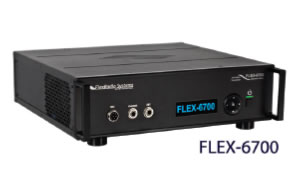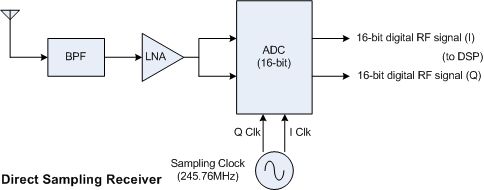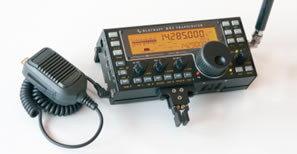W6SI Blog Page (Entry 3)
12/9/14
6/26/16: Update below
New Receiver Architectures Part 1
Just a few months ago, something astonishing has happened. Sherwood Engineering, known for its high performance receiver ratings, crowned a new transceiver to Flex Radio 6700. Bob Sherwood ranks the radios with the highest third order dynamic range, narrow spaced (meaning 2KHz). The top position has been occupied by German made Hilberling Pt-8000A for the past two years and has not moved until recently. This radio is a classic-architected double super heterodyne design, which is astonishing in itself, but that’s another day’s story.
Device |
Noise |
AGC |
|
100kHz |
|
LO Noise |
Spcng |
Front End |
Filter |
Dynamc Range |
|
Dynamic Range |
|
Added 9/29/14 |
-118 |
3.0 |
Var |
A/D Limit |
2.0 |
145 |
10 |
B Band Pass |
115 |
99 |
20&2 |
108 |
20&2 |
Added 10/02/12 |
-128 |
5.4 |
3 |
142 |
0.45 |
144 |
10 |
A Trk Presel |
100 |
105 |
20 |
105 |
2 |
Added 08/10/12 |
-123 |
12 |
3 |
138 |
0.9 |
144 |
10 |
B Band Pass |
110 |
105 |
20 |
104 |
2 |
(Courtesy: Sherwood Engineering Receiver Test Data)

(Click on the pictures for larger images)
So how did this new Flex Radio system beat the incumbent? Well, this is a new architecture that made the traditional measure of third order intermodulation measurement meaningless.
As you can see from the table above, two of the top three radios are SDR radio. And they both cheat in the dynamic range measurement to get the high ranking, but then both have own shortcomings.
Elecraft KX-3 is an amazing “little rig” with tons of performance and functionalities. It is a direct conversion receiver, i.e., it mixes the incoming signal with the same frequency as your intended receive frequency. The output is an audio signal (still needs to be decoded) but there is no secondary mixers or IF stages to get “birdies” or inter-mod problems. Thus it boasts 104dB dynamic range measurement (assuming you have the optional roofing filter installed). That’s 3dB better than the older brother K3, which I believe is actually more robust receiver for a good reason. As with any direct conversion radio, KX3 has a weakness in its image rejection ratio that’s moderate at best at 70dB. An “image” is the reflection of the original RF signal on the opposite side of the IF frequency. What is the IF for a direct conversion receiver? Zero. So its image is right next to it, rejected only by the “roofing filter”, which actually is an active audio filter.
Enter Flex Radio 6700. What’s different about this radio? Well, it does something amazing that was not possible until quite recently. After the front end filtering, pre-amplification, attenuation, etc., it feeds the signal directly to Analog-to-Digital converter. Its sampling clock is at 245.76MHz. Easily satisfying Nyquist Criteria deep into VHF frequencies. Once the signal is digitized, it can apply any amount of filtering or signal processing. This approach is called Direct Digital Sampling, and made only possible by the state-of-the-art high speed ADC from Analog Devices. Because there is no mixing circuit to saturate anywhere, there is no dynamic range suppression to worry about. Fantastic. Is this the wave of the future? Perhaps. What’s the hold back? Well, for one thing, this ADC device is extremely expensive. How much? If you have to ask, you can’t afford it, and it is reflected on the pricing of the 6700 radio ($7,500). Could that be a short term problem? Maybe. I don’t know. It nonetheless shows a price advantage over some of the highest class $10,000+ rigs.
But here is another shortcoming of this implementation. The ADC is 16-bit wide. That means theoretical maximum dynamic range is 96dB (voltage ratio). That is, if the internal noise residue is absolutely zero, which is not possible. More practical range for 16-bit system is like 65 to 70dB. Hence no matter how you measure it, you cannot have a radio with dynamic range exceeding 100dB. But Sherwood’s data defies that assumption. How? Flex Radio folks did it by using variable gain pre-amplifier and attenuator to cover the range, but it does not mean you can receive 0dB signal and 108dB signal at the same time and make out each of them. Think of it like a digital oscilloscopes. They have over Giga samples / sec rate, but typically using 8 or 9-bit ADC. But they cover the range from a few mV to tens of V range, because they have vertical amplifier gain knob on the front. You have to adjust the range to somewhere convenient to observe the signal. Bob Sherwood adds note on his data table: “This data does NOT imply you should generally run the preamp! This is a testing anomaly of a direct sampling receiver”.
In short, at this point the dynamic range measurement becomes pure numbers game, and is not a reliable measure of its dynamic performance. Someone will have to come up with the way to evaluate such system.
Elecraft KX3 achieves 104dB dynamic range using 24-bit ADC (145dB range). They can afford that, because the signal they are feeding is at base band, an audio frequency. This is a fairly common component, used for high-end audio gears. To my knowledge, 24-bit RF ADC does not yet exist.
So which is better, the KX3 or 6700? Well it depends. I don’t have a personal experience using Flex Radio other than at Flex Radio booth at ARRL convention. It looks fine, but that’s no “real working” experience. So performance wise, I can’t talk much. I am sure both radios work excellently. There are some compelling function features Flex Radio offers (such as multiple receiver slices). KX3 on the other hand, is a stand-alone radio that does not need an external computer (thus you can take it along on a trip). Then it is a matter of values you put on the performance / features vs. cost. If I had $7,500 to burn, but have to pick one, I would be torn which radios to get. Since I didn’t have that money, the choice was easy. And I am happy with my KX3.
Yet, these radios signify the dawn of the new design approach for high performance receivers. Whether you own one or not, more of these new wave radios are coming and it would be fun to keep an eye on them.
(Continued to Part 2)
![]() 6/26/2016: Leif Asbrink / SM5BSZ sent me a comment, regarding this writing.
6/26/2016: Leif Asbrink / SM5BSZ sent me a comment, regarding this writing.
I always welcome any feedback (barring flaming kind) for a good discussion, so thank you, Leif.
It took me a little while understand his point, and after discussing with a few of my colleagues, I ultimately concluded either I disagree with his point, or we are discussing two completely different subject (marred by mixed-up terminology, may be).
To be fair, I would list his original posting here for you to read.
If you would like to discuss the subject further, you can contact him directly at leif@sm5bsz.com or send your message to me to forward.
de W6Si / Tak
----------------------------------------------------------------
Hello Tak,
I came across your blog page: New Receiver Architecture
You write:
"The ADC is 16-bit wide. That means theoretical maximum dynamic range is 96dB (voltage ratio). That is, if the internal noise residue is absolutely zero, which is not possible. More practical range for 16-bit system is like 65 to 70dB."
This statement is a bit pessimistic. Data sheets typically specify
75 dB or for slower devices a little better. For example:
http://www.analog.com/en/products/analog-to-digital-converters/ad-converters/ad9467.html#product-overview
You then write:"Hence no matter how you measure it, you cannot have a radio with dynamic range exceeding 100dB" THIS IS TOTALLY WRONG.
The 75 dB dynamic range is signal power divided by the total noise power in a bandwidth of 125 MHz. Noise is proportional to the measurement bandwidth so when the digital signal is filtered to a bandwidth of 500 Hz, the noise power is reduced by a factor of 250000 which corresponds to 54 dB. That means that the dynamic range of an
AD9467 sampling at 250 MHz would have a dynamic range of 129 dB according to the data sheet. This is under the assumption there is no phase noise on the sampling clock which is a very good assumption when the RF signal is on 14 MHz.
Have a look at this page:
http://www.sm5bsz.com/lir/sdrcmp/bdr/bdr-1.htm
Figure 1 shows the simultaneous presence of a weak and a strong signal.
I am sure the Flex
Table 1 shows the dynamic range. Subtract 27 dB to go from dBc/Hz to dynamic range in a bandwidth of 500 Hz.
There is a problem on the part 2 of the blog (Entry #7):
You write: "FlexRadio is another story. As I have mentioned in the last installment of the subject, that one is a “Direct Sampling”
radio. It feeds the incoming signal (after low noise RF amp) directly to A to D converter. There is no room for reciprocal mixing to happen. Though there can be some jitter in sampling clock, they do not mix with adjacent strong signal to generate noise."
This is absolutely wrong. The A/D converter is a mixer with a digital output. You could use the sample and hold as a mixer and replace the ADC by an analog radio. An almost ideal one that would start with a crystal filter on some selected frequency. You would find that reciprocal mixing occurs due to the phase noise of the sample and hold clock. It does not matter if evaluation is analog or digital. What matters is the time jitter of the samples.
This video gives a nice illustration on sampling clock jitter (caused by poorly filtering on the oscillator.) https://www.youtube.com/watch?v=_30GIKI60Ug
The problem is fixed with a big capacitor on Vcc.
The data in table 1 here:
http://www.sm5bsz.com/lir/sdrcmp/bdr/bdr-1.htm
is an evaluation of reciprocal mixing in direct sampling receivers.
Your texts need to be rewritten, you are misleading others.
73
Leif
Above is a reflection of my thought and only mine. But if you have any questions, feedback and/or suggestions, please send me an e-mail. I might reply on this page (sorry, no guarantee)


